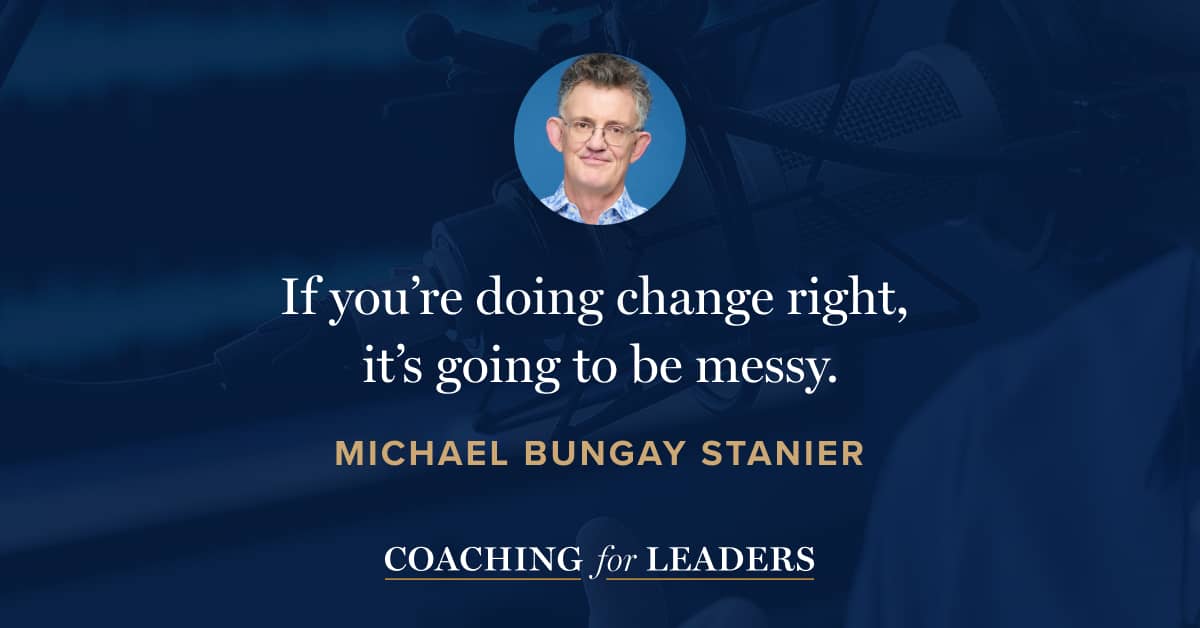Michael Bungay Stanier: Change Signal
Michael Bungay Stanier is best known for The Coaching Habit, the best-selling coaching book of the century and recognized as a classic. He was a Rhodes Scholar, and was recently awarded the coaching prize by Thinkers50. He's now the host of the new Change Signal podcast.
If you’re doing change right, it’s going to be messy. In this conversation, Michael Bungay Stanier returns to show us where to start, the key mindsets to have, and the first steps for getting traction.
Key Points
- If you’re doing change right, it’s going to be messy.
- Before you remove a fence, figure out why it’s there.
- Take inspiration from Emily Dickinson: “Tell all the truth but tell it slant.”
- Beware giving lip service to the emotional realities of change and then moving forward without really addressing them.
- Strategy is a living conversation. Run experiments. Fire bullets before cannonballs.
- Motivation is a critical factor in change. Better to be less efficient and have people with you than to force compliance with a “perfect” plan.
Emily Dickinson:
Tell all the truth but tell it slant —
Success in Circuit lies
Too bright for our infirm Delight
The Truth's superb surprise
As Lightning to the Children eased
With explanation kind
The Truth must dazzle gradually
Or every man be blind —
Resources Mentioned
- Change Signal podcast hosted by Michael Bungay Stanier
- The Coaching Habit* by Michael Bungay Stanier
Related Episodes
- Engaging People Through Change, with Cassandra Worthy (episode 571)
- How to Approach a Reorg, with Claire Hughes Johnson (episode 621)
- How to Prevent a Team From Repeating Mistakes, with Robert “Cujo” Teschner (episode 660)
Expert Partner
Are you a talent development or human resources leader seeking a coach for an internal client? Coaching for Leaders has partnered with some of the top coaches in the world, including a number of past podcast guests. Help us make an introduction by visiting our Expert Partners Page and telling us what you’re seeking in a coach.
Discover More
Activate your free membership for full access to the entire library of interviews since 2011, searchable by topic. To accelerate your learning, uncover more inside Coaching for Leaders Plus.





